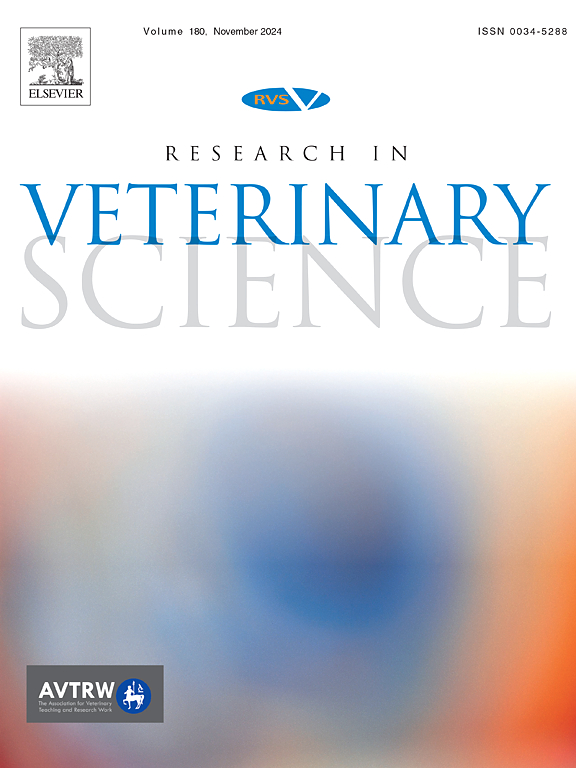Biomechanical evaluation of strength and stiffness of 2.0 mm and 1.5 mm locking plates with various screw configurations on rabbit tibias
IF 2.2
3区 农林科学
Q1 VETERINARY SCIENCES
引用次数: 0
Abstract
Objective
The objective of this study was to compare the strength and stiffness of 1.5 mm and 2.0 mm locking plates with various screw fixation configurations applied to the tibia bones of rabbits.
Animal
Oryctolagus cuniculus (domesticated rabbits).
Procedure
Twenty-five rabbit tibias were randomly assigned to one of five groups. Control bones remained intact, whereas all others were osteotomized to create contact fracture models that were fixated with 2.0 mm locking screws or 1.5 mm locking screws applied to locking plates (LP) in either 4-screw or 6-screw configurations and tested in 4-point bending until failure. Load-deformation curves were generated for each sample and used to calculate stiffness (slope of the curve within the area of elastic deformation) and strength (load to failure).
Results
Intact controls had greater strength and stiffness than any LP fixation. The 1.5mm 4-screw LP construct and the 2.0mm 4-screw LP construct were significantly stronger than the corresponding 6-hole constructs but were not as strong as the intact tibia. The 2.0mm 4-hole LP construct had the stiffest construct and was significantly stiffer than the corresponding 6-hole constructs but was not as stiff as the intact tibia.
Conclusion
Fracture fixation with a 2.0 mm 4 screw LP would provide the greatest strength and stiffness in tibial fracture repairs in the rabbit.
Clinical relevance
This project will provide veterinary surgeons with more objective data needed to make the best clinical decisions when surgically repairing fractures in the tibia of rabbits.
求助全文
约1分钟内获得全文
求助全文
来源期刊

Research in veterinary science
农林科学-兽医学
CiteScore
4.40
自引率
4.20%
发文量
312
审稿时长
75 days
期刊介绍:
Research in Veterinary Science is an International multi-disciplinary journal publishing original articles, reviews and short communications of a high scientific and ethical standard in all aspects of veterinary and biomedical research.
The primary aim of the journal is to inform veterinary and biomedical scientists of significant advances in veterinary and related research through prompt publication and dissemination. Secondly, the journal aims to provide a general multi-disciplinary forum for discussion and debate of news and issues concerning veterinary science. Thirdly, to promote the dissemination of knowledge to a broader range of professions, globally.
High quality papers on all species of animals are considered, particularly those considered to be of high scientific importance and originality, and with interdisciplinary interest. The journal encourages papers providing results that have clear implications for understanding disease pathogenesis and for the development of control measures or treatments, as well as those dealing with a comparative biomedical approach, which represents a substantial improvement to animal and human health.
Studies without a robust scientific hypothesis or that are preliminary, or of weak originality, as well as negative results, are not appropriate for the journal. Furthermore, observational approaches, case studies or field reports lacking an advancement in general knowledge do not fall within the scope of the journal.
 求助内容:
求助内容: 应助结果提醒方式:
应助结果提醒方式:


